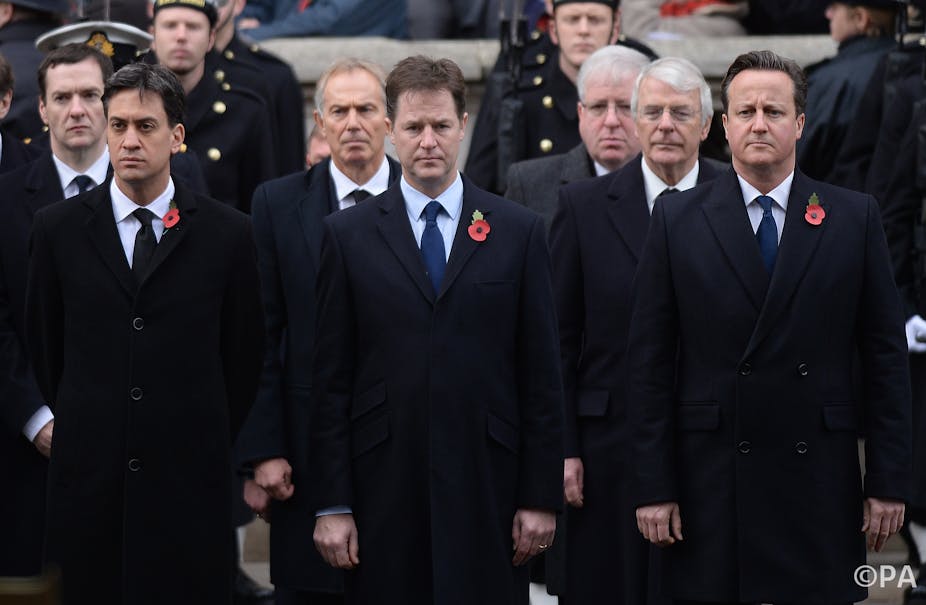The UK’s broadcast regulator Ofcom recently released a draft ruling that the Green party lacks sufficient support to qualify as a major party. This could give mainstream media the excuse they were searching for to overlook the Greens in much of their coverage of the 2015 UK election. Yet given that the contest is likely to yield another coalition government, it is now more important than ever to create a space for fringe parties in our nation’s political discourse.
Though Westminster is not in the habit of looking outside of its own closed networks – and that is part of the problem – there are two main sources of hope close to home. The first is the Celtic fringe – in particular, the devolved administrations in Scotland and Wales – and the second is the European model, as represented in the Nordic and Baltic states.
Both the Welsh and Scottish parliaments were specifically designed to ensure that no single political party could easily hold a majority: they positively encouraged the formation of coalition governments. In 2007, the SNP became the first party to form a single-party, minority government in the Scottish parliament, after a series of coalitions from 1999.
Building bridges, not burning them
The key thing that distinguishes policy making in coalition governments is the need to reach consensus across different political parties, in order to develop and enact legislation. In the Celtic and European models, this usually extends to involving key civic partners around specific policy issues.
For example, German energy policies have been developed by key partnerships involving political parties like the Greens, and environmental NGOs; childcare policies in the Nordic states were developed by achieving cross-party consensus with strong support from civic feminist organisations and trade unions; long-term care policies in the Baltic states were developed by political parties working in conjunction with NGOs representing carers and care agencies.
This consensus-led approach to policy making has several effects. Including a wide range of them ensures that coalition governments draw on different types of evidence to create policy. It also means that the key players, whose co-operation is needed to implement the policy, are much more likely to be co-operative, because the design of the policy will reflect their values and goals.
Coalition leadership tends to form around issues that are important to civic society, instead of exclusively around government policies. This leads to a mix of top-down and bottom-up policy making. Another feature of coalition-led governments is that it is never advisable to alienate any group completely, as they may be possible future policy partners. So, arguably, coalitions lead to better, more inclusive governance.
Let’s get visible
Another distinguishing feature of the Celtic and European approaches to political campaigning is that all parties are visible in the run up to an election. Each party is invited to take part in debates, and given fairly even-handed coverage by traditional media, since there is no way of guaranteeing that those parties will not be working with other key interest groups or parties in the future.
All this appears in stark contrast to the current approach taken in the run up to the UK’s 2015 general election. At present, the main parties – the Conservatives, Labour Party and Liberal Democrats – appear regularly in traditional media, alongside the UK Independence Party (UKIP). Other parties and leaders are conspicuous by their absence.
Social media campaigns are currently running to protest the mainstream media’s failure to include the leaders or policies of the SNP, Plaid Cymru and the Green Party in their coverage. The Ofcom decision is likely to choke the momentum of such movements.
Female leadership in fringe parties
The major parties are all led by men, drawn from a small circle of elite politicians, who are well versed in adversarial, majority-led politics. The fringe party leaders are all women, drawn from a much wider range of backgrounds, used to consensus building, coalitions, and working with a wide range of non-elite stakeholders.
This pattern is echoed internationally: the Nordic and Baltic coalitions are all filled with strong female leaders – many of them openly feminist – used to working towards consensus around issues and policies. The visible presence of women and other non-elites in democratic and civic politics leads to different styles of policy making.
For example, it is currently only the fringe parties who are offering credible policy alternatives to austerity-led welfare and economic policies. Denying them a voice in the debate is denying voters access to anything other the centrist consensus on austerity-based approaches to economic and social policy.
Voters should arguably be given a wider choice of policies and values, beyond the debate around how severe spending cuts should be. In particular, the Celtic fringe and Green parties are offering a different vision of policy around universalism, social solidarity and a different style of leadership.
The UK’s fringe parties could potentially hold the balance of power in a future coalition more effectively than our three larger parties. Letting them into the debate and into government could improve governance and transform politics and policy making in the UK. But to vote for them, the electorate first has to see and hear them.

